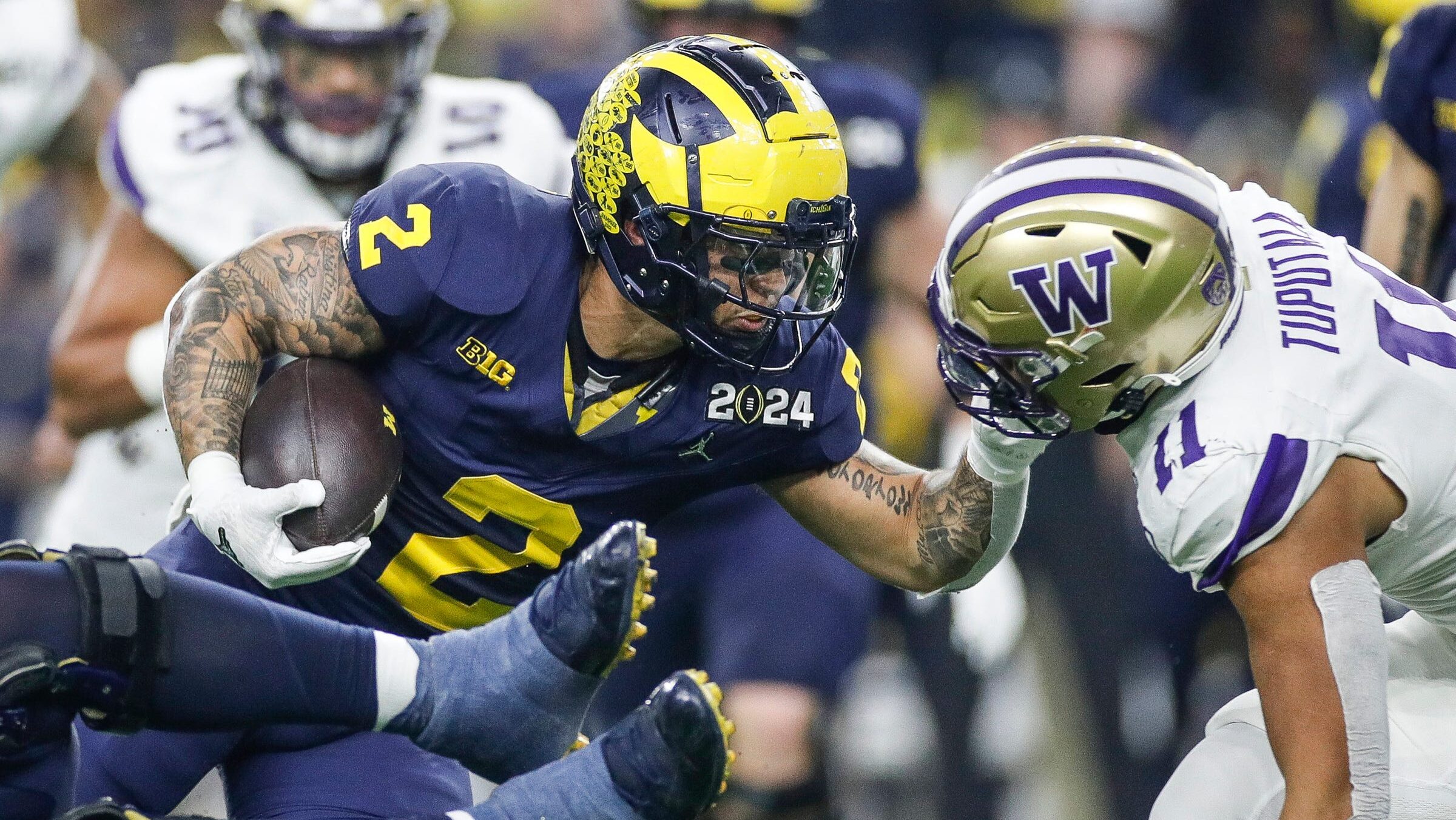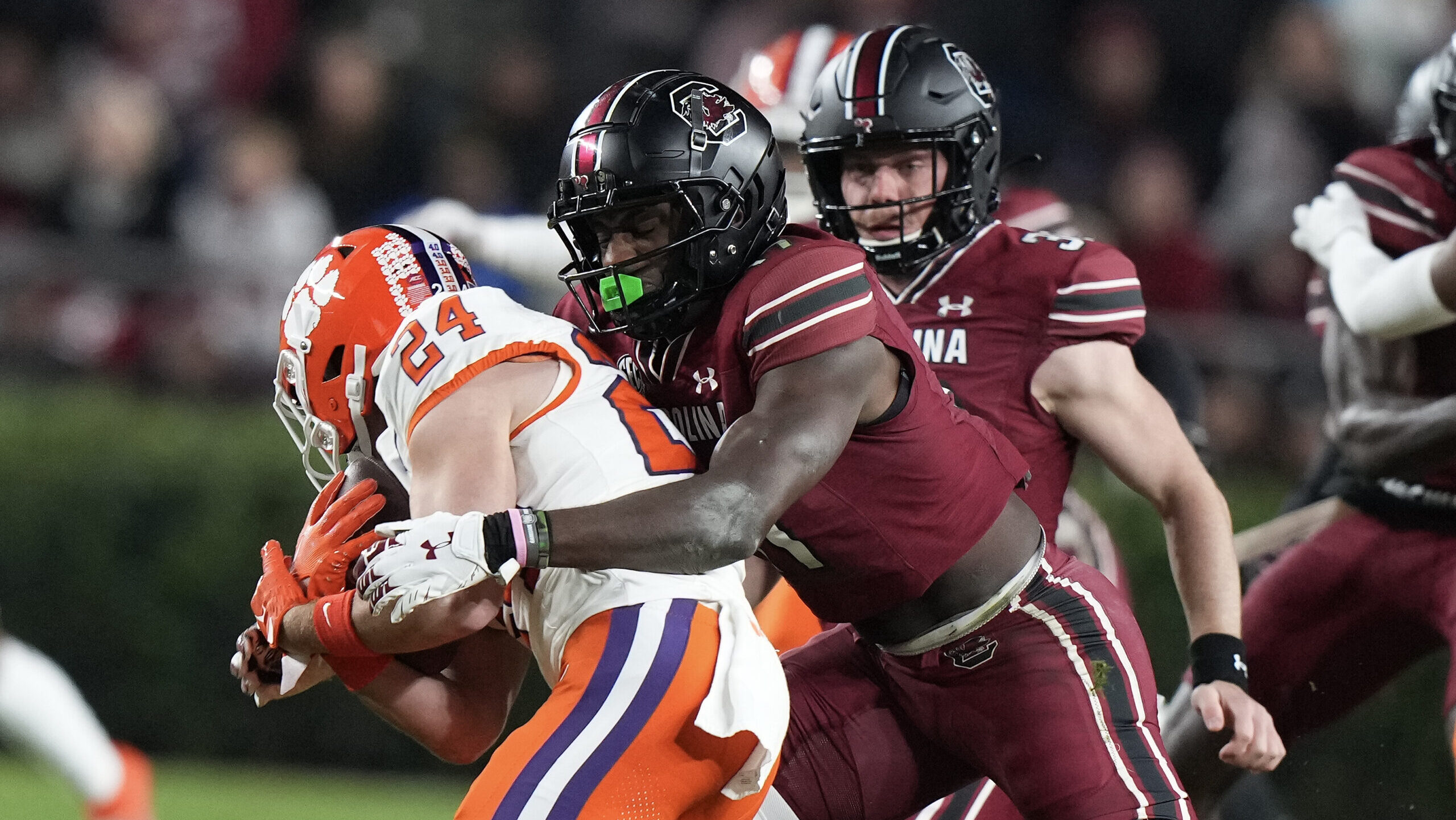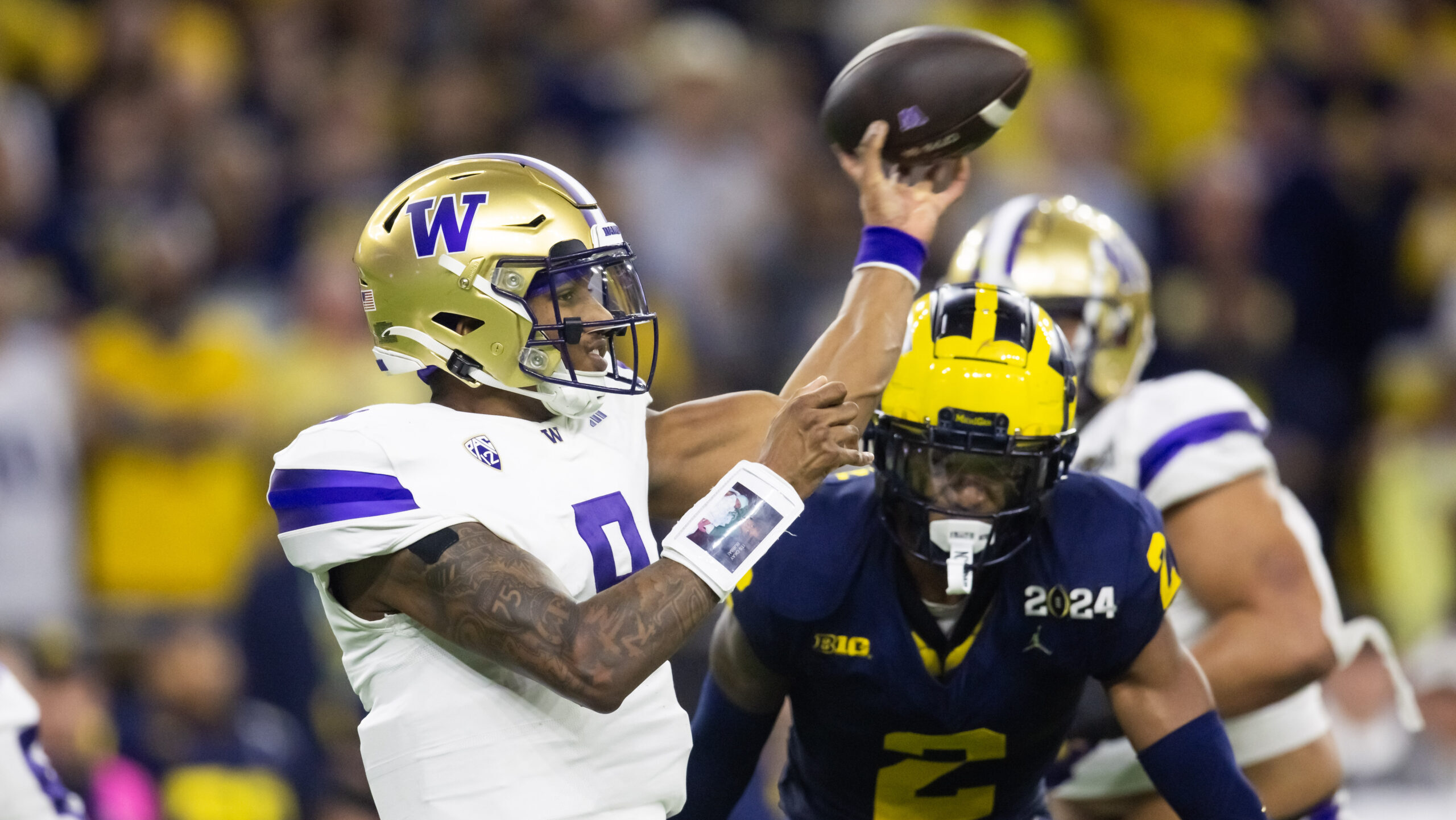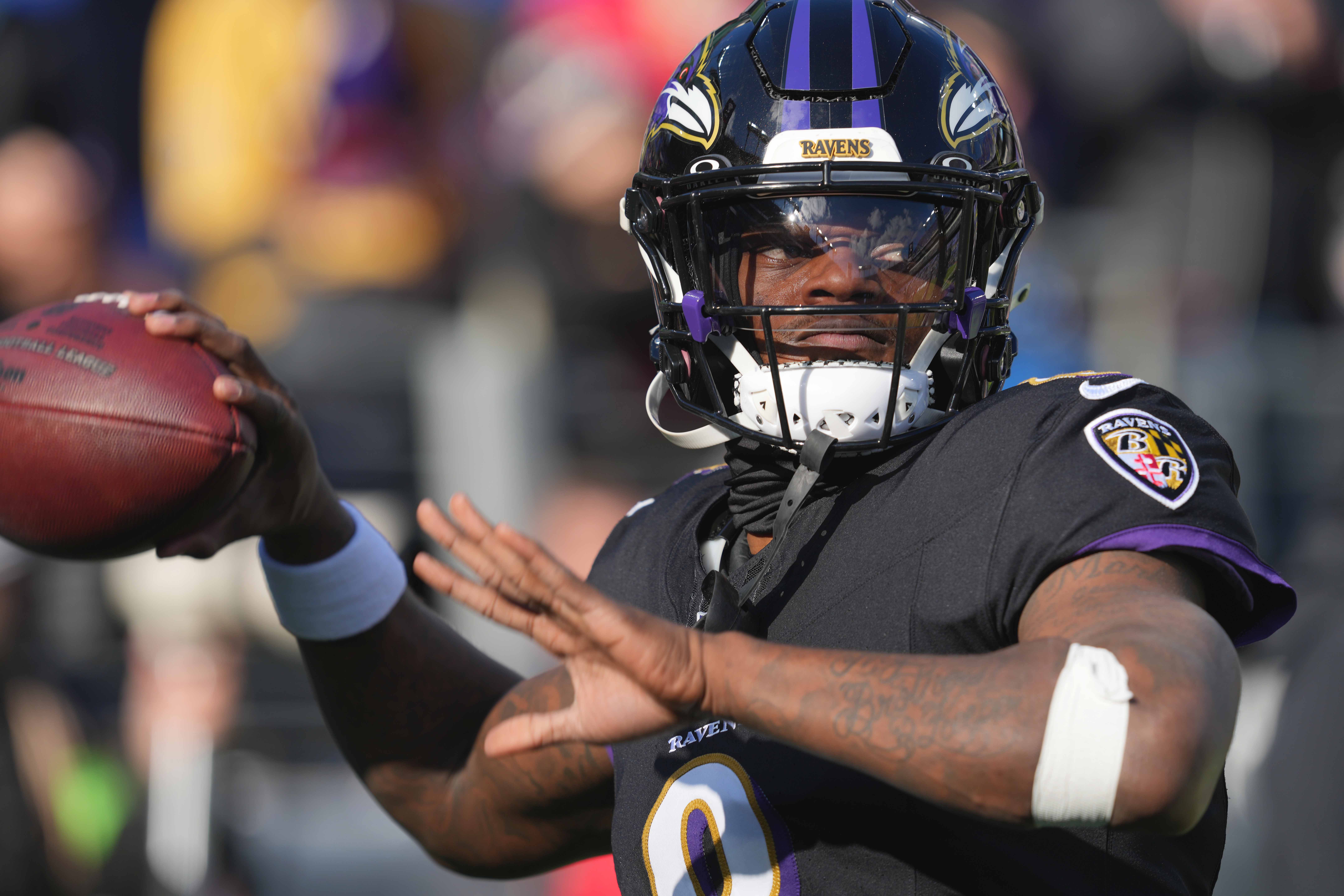Analysis
9/27/23
6 min read
2023 Fantasy Football: DFS Lessons Learned from NFL Week 3
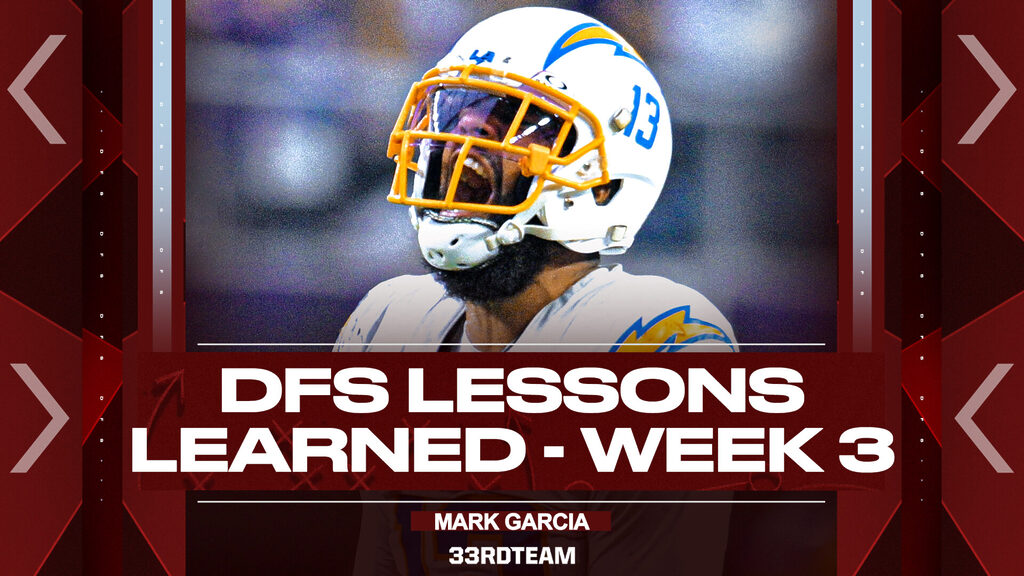
Reflection is an underrated aspect of consistent DFS play. Think about this: How do the best pitchers, wide receivers or financial analysts remain on top through the changing dynamics of the game or the markets they play in?
They do so by consistently learning, growing, being open to new ideas and practices, tweaking what works and what doesn’t and changing with the game.
Reviewing your mistakes can give you staying power in any competition. Most of the top DFS players examine their play the following week — so what edge can we gain over even the most die-hard players?
In this piece, we’ll examine the Week 3 slate and compare those conclusions with rosters from some of the top players in the game.
Week 3 DFS Lessons Learned
Observations
This week was one of the chalkier weeks in recent memory. The mega-rostered game environment erupted (Los Angeles Chargers at Minnesota Vikings), and the chalk one-off team (Miami Dolphins) provided three massive scoring outputs.
Still, the week’s highest score came from a player on less than one percent of rosters across GPPs of all shapes and sizes.
That begs the question – how much weight should we place on rostership expectations in GPPs of varying sizes? The classic answer is that it depends on the field's size and the payout structure, but is there more to this discussion?
There is, which is why we explore the chalk on each slate on a deeper level. But even beyond that discussion, we’re seeing significant trends developing. Noticing those trends and developing a game plan built to maximize expected value in a dynamic landscape is what we’re after.
Let’s take a quick journey down this winding path of the NFL’s current state.
We’ve explored this in a couple of places so far, but it begs repeating here — league-wide scoring has been trending down in the last three seasons. In the COVID-19 season (2020), teams averaged 2.88 touchdowns per game. That number gradually declined to a low of 2.43 in the 2022 season as defenses made the transition to a two-high shell.
We’ve seen teams handle this shift in defensive philosophy differently. The Kansas City Chiefs introduced a “schemed usage gadget” role. Mecole Hardman held the position at the beginning of the 2022 season before Jerick McKinnon took it after Hardman’s injury.
Kadarius Toney held that spot this year to start the season, but McKinnon took it back in Week 3. McKinnon’s two receiving touchdowns came through this usage. The Chiefs have also paid particular attention to downfield speedsters they can use to manipulate opposing safeties. During the previous two seasons, that man has been Marquez Valdes-Scantling.
Now look at the Cincinnati Bengals, who don’t have a downfield threat. It could be Ja’Marr Chase, but why send Chase on empty routes downfield to manipulate an opposing safety?
They essentially don’t have an answer to the league’s two-high-base defense. The first time we’ve seen the Bengals be active in manipulating an opponent’s safeties was in Week 3 when Chase ran a significant percentage of his routes from the slot.
We saw that even with a more schemed role for Chase, the Bengals had difficulty attacking downfield and were more confined to short-to-intermediate schemed usage through Chase.
Now, how does this discussion pertain to rostership numbers among the field in our roster-building process?
Each NFL team is at a different stage in unlocking offensive upside against two-high shells. We discussed the Chiefs and Bengals because those two teams represent the two extremes.
The Chiefs are installing new fundamentals to their offense, while the Bengals remain static. This is important because it affects the game environments involving these two teams.
Now, look at the Dolphins, Chargers, San Francisco 49ers, Vikings and (surprisingly) the Houston Texans. Each team actively schemed its offense to take advantage of two high defensive shells. We see layered routes, plus zone and gap run-blocking schemes.
We see heavy utilization of pre-snap motion. Those things, combined with standard quarterback practices (hip positioning, eye and head movement), influence opposing safeties' positioning and reaction times.
This is a critical discussion to have when we start talking about chalk. The teams looking to exploit current defensive trends provide game environments ripe for increased fantasy production.
We saw that transpire in Week 3. The Dolphins, Vikings and Chargers provided the best environments for fantasy production, and it didn’t matter what the field’s interest in those spots was.
The game environments are what matters most. We should be harnessing those moving forward.
Roster Examination
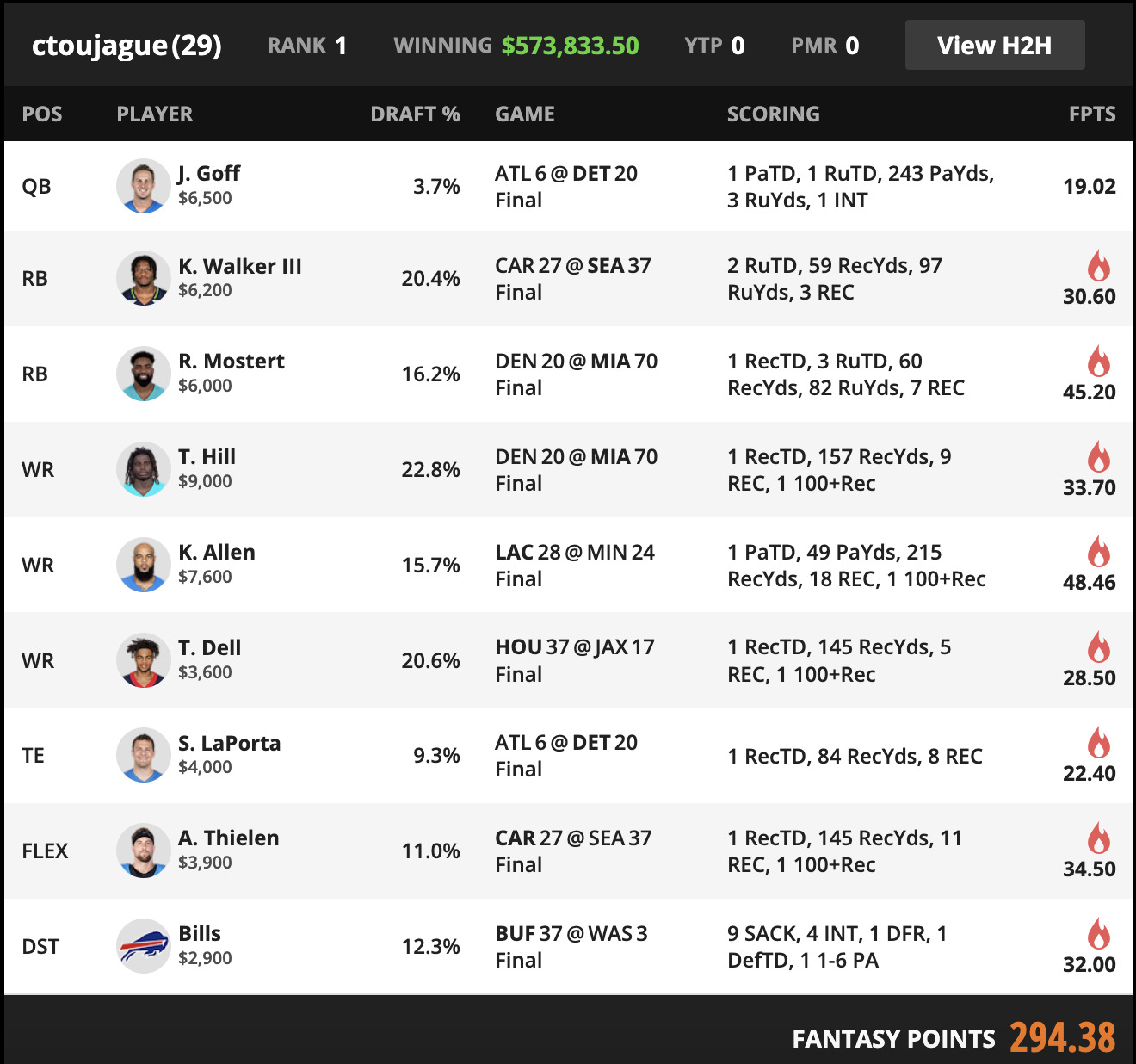
The Week 3 Milly Maker winner on DraftKings pulled in many of these principles. Two members of the hyper-concentrated Dolphins offense appear, as do two members of the offenses we discussed above (Keenan Allen and Tank Dell).
We know Dolphins coach Mike McDaniel runs an extremely concentrated offense that becomes even more condensed should one of its primary skill position players miss a contest.
As we saw, that left Tyreek Hill, Raheem Mostert and De’Von Achane to carry the bulk of the work against the Denver Broncos, providing all three with elite-level fantasy output.
The Chargers have been highly concentrated through the air this season. Most of their usage has flowed through Allen, Mike Williams and Austin Ekeler, who missed this week with an ankle injury.
That left Allen and Williams as the primary pass catchers in the top expected game environment on the slate. Also, backup RB Joshua Kelley is not the same caliber of pass catcher as Ekeler. That helped Allen and Williams deliver elite fantasy production.
The biggest takeaway is that rostership expectations are simply a piece of the puzzle and should not be the driving force behind our decision-making process. We can harness projections to find players in those elite environments who are expected to be under-rostered, as was the case for Achane this weekend. Still, rostership projections should not get us off the highly rostered players in the top environments.
Moving forward, we should identify these top spots and vary how we attack them instead of shying away from high rostership expectations. I fell into this trap in Week 3, costing me two-thirds of a weekly buy-in.
Follow The 33rd Team Podcast Network on Spotify and Apple Podcasts.


